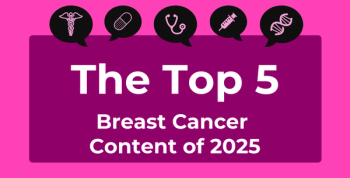
Health Equity & Access Weekly Roundup: June 23, 2025
Key Takeaways
- Systemic inequities result in higher premature death, maternal and infant mortality, and cancer disparities for Black Americans, exacerbated by limited access to care.
- Democratic leaders reaffirmed EMTALA protections amid policy reversals, emphasizing the importance of patient care over political influences.
From widening racial health disparities and abortion care restrictions to coverage losses, leadership gaps in addressing social needs, and worsening workforce shortages, the urgent need to improve health equity is underscored in the US.
5 Health Crises America Urgently Needs to Address for Black Communities
Racial and ethnic disparities continue to undermine health outcomes for millions of Black Americans, with systemic inequities driving disproportionate rates of premature death, maternal and infant mortality, cancer disparities, and gaps in insurance coverage and access to care. Black Americans are 2 to 3 times more likely to die prematurely from preventable causes in most states, face double the infant mortality rate of White infants, and have significantly higher risks of maternal death. They are also more likely to be diagnosed with advanced-stage breast and ovarian cancers due to structural barriers to early detection and specialist care, challenges that have been exacerbated by reproductive health restrictions and provider shortages. Despite improvements in coverage from the Affordable Care Act (ACA), many Black Americans—particularly in non-Medicaid expansion states—remain uninsured and face limited access to high-quality, culturally competent care. Addressing these disparities requires investing in community-based prevention, expanding Medicaid, building a diverse health care workforce, and ensuring equitable access to care in underserved communities.
Democratic Doctors Caucus Reaffirms EMTALA Amid Trump's CMS Policy Reversal on Abortion Care
Following the Trump administration's revocation of federal guidance related to the Emergency Medical Treatment and Labor Act (EMTALA), Democratic leaders, including Whip Katherine Clark and the Democratic Doctors Caucus, held a press conference to reaffirm that EMTALA remains in force, regardless of political changes. The withdrawn guidance, originally issued in 2022 under the Biden administration, reinforced protections for pregnant patients seeking emergency care, but its removal has sparked fears of increased confusion among hospitals, physicians, and patients, particularly amid ongoing abortion restrictions post-Dobbs. Democratic physician-lawmakers warned that this action deliberately sows uncertainty, putting lives at risk by politicizing emergency care, while critics like SBA Pro-Life America claimed the guidance itself had fueled confusion by expanding abortion access. The Democratic Doctors Caucus vowed to defend EMTALA protections and emphasized their commitment to patient care over politics.
10 Years of Coverage Gains Threatened by Proposed Federal Policy Changes, Report Finds
The 2025 Commonwealth Fund Scorecard reveals that over a decade of progress in expanding health coverage and improving access to care in the US is at risk, largely due to state and federal policy shifts. The report shows that states that embraced the ACA, including Medicaid expansion, have seen major gains in coverage and affordability, while states that rejected expansion continue to face high uninsured rates and poorer health outcomes. Nationwide, the uninsured rate among working-age adults has dropped from 20.4% to 11% since 2013, but proposed federal policies, such as expiring ACA subsidies and Medicaid work requirements, could reverse these gains and leave millions uninsured. The report also highlights worsening trends in public health, including declining childhood vaccination rates, rising infant mortality—particularly among Black infants—and significant disparities in preventable deaths across states and racial groups. Experts warn that without sustained, equitable policies, access to affordable, quality care will remain deeply tied to geography and socioeconomic status.
Hospital Management Involvement Impacts Health-Related Social Needs Program Adoption
Acute-care hospitals with involvement from both senior leadership and other management levels were significantly more likely to adopt initiatives addressing health-related social needs (HRSNs), which are essential for advancing health equity. Using data from the 2022 American Hospital Association survey, the study observed that hospitals with dual-level management engagement were more likely to implement programs related to food insecurity, transportation, interpersonal violence, social isolation, and housing compared with those lacking such involvement. While senior leadership alone had some positive impact, the inclusion of other managers strengthened the likelihood of comprehensive HRSN programs. The findings underscore the critical role of engaged leadership in driving systemic change to reduce health disparities, as emphasized by CMS’s Framework for Health Equity, though the study was limited by its cross-sectional design and survey response rate.
Workforce Technology Eases Staffing Shortages in Rural Health Care
As health care systems face rising patient demand and a growing clinician shortage, which is expected to reach a deficit of 34,000 primary care physicians by 2035, hospitals are increasingly adopting workforce management technology to ease administrative burdens, reduce burnout, and optimize care delivery. Tools like artificial intelligence, predictive scheduling, and digital wellness platforms are helping providers improve staff satisfaction, streamline operations, and expand patient access, especially in rural areas where staffing challenges are most acute. However, gaps remain, with many health systems still struggling to prioritize employee experience in their digital strategies. Experts emphasize that system-wide visibility into staffing and resource utilization is crucial, particularly for rural hospitals with limited space and personnel, as even modest improvements in efficiency can significantly enhance care access and outcomes in underserved communities.
Newsletter
Stay ahead of policy, cost, and value—subscribe to AJMC for expert insights at the intersection of clinical care and health economics.









































